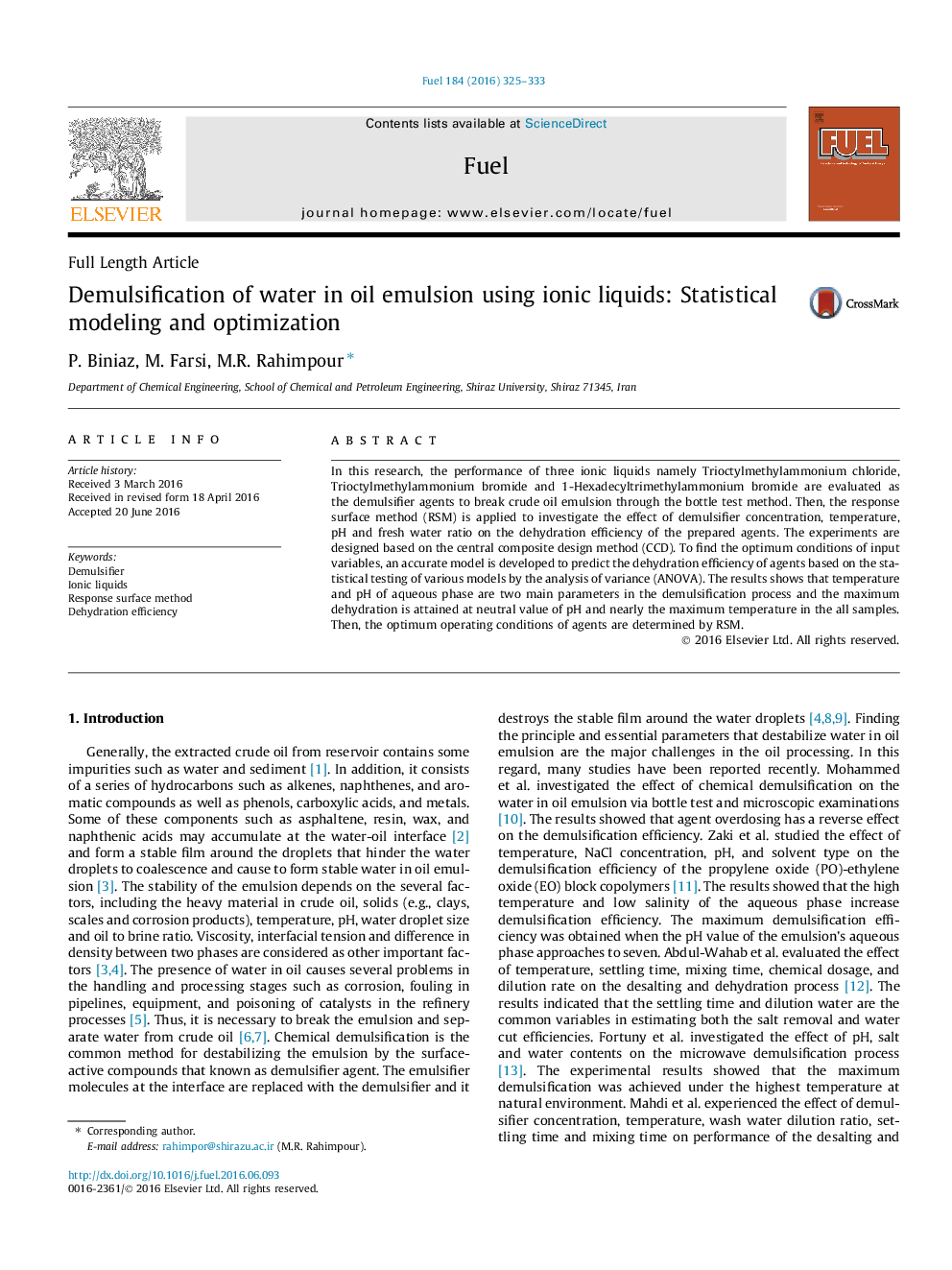| Article ID | Journal | Published Year | Pages | File Type |
|---|---|---|---|---|
| 6633014 | Fuel | 2016 | 9 Pages |
Abstract
In this research, the performance of three ionic liquids namely Trioctylmethylammonium chloride, Trioctylmethylammonium bromide and 1-Hexadecyltrimethylammonium bromide are evaluated as the demulsifier agents to break crude oil emulsion through the bottle test method. Then, the response surface method (RSM) is applied to investigate the effect of demulsifier concentration, temperature, pH and fresh water ratio on the dehydration efficiency of the prepared agents. The experiments are designed based on the central composite design method (CCD). To find the optimum conditions of input variables, an accurate model is developed to predict the dehydration efficiency of agents based on the statistical testing of various models by the analysis of variance (ANOVA). The results shows that temperature and pH of aqueous phase are two main parameters in the demulsification process and the maximum dehydration is attained at neutral value of pH and nearly the maximum temperature in the all samples. Then, the optimum operating conditions of agents are determined by RSM.
Related Topics
Physical Sciences and Engineering
Chemical Engineering
Chemical Engineering (General)
Authors
P. Biniaz, M. Farsi, M.R. Rahimpour,
